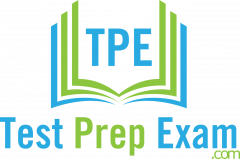Updated 2020
How You Can Ace the PSAT
The PSAT is a practice version of the SAT. Generally, high school students in 10th or 11th grade take the test before applying to college. Students with a good score in junior year are eligible to receive a National Merit Scholarship. Like the SAT, there are two sections in the PSAT: Evidence-Based Reading and Writing, and Math.
If you’re still in high school and are taking the test, here are 4 tips on how to ace the PSAT.
1. Learn the Test Format
Know what to expect in your test beforehand so that you can get working as soon as the timer starts. Don’t waste time figuring out which questions are where and how long you have on each portion. The PSAT has 2 sections with a total of 139 multiple-choice questions.
The 2 sections include 3 tests: the Reading Test (47 questions, 60 minutes), Writing & Language Test (44 questions, 35 minutes), and the Math Test (48 questions, 70 minutes). Considering the format is fixed, you can make an estimate on how much time you should spend on each question.
2. Make Reading a Habit
Two of the sub-tests in the PSAT measure your command on the English language. That’s why it’s important that you read a lot to improve your understanding and use of the language. Set a designated time every day for reading. 20 to 30 minutes will help too. Read material from different sources in your reading sessions – your material should include both fiction and non-fiction.
Incorporate academic articles in your reading time as well. Academic texts are generally more dense and difficult to understand than other written material. Therefore, reading them often will improve your reading comprehension – which, in turn, will help you in the reading section of the PSAT.
3. Use Practice Tests to Identify Your Strengths and Weakness
You’re going to get a good score only if you spend significant time practicing for the PSAT. Practice tests will help you get into the rhythm and manage your time better with every successive test. Review your answers after completing every practice test. Read the explanations given for answers so you understand why you got an answer wrong and what you had to do to get it right.
After completing a good number of practice tests, you’ll notice a pattern in which you’re doing better in some portions over others. Make a note of what you’re doing well and poorly. Devote more time to the portions of the test that you’re weak in and spend less time on what you’re good at.
4. Leave Nothing Blank
There is no negative grading in the PSAT so use probability to your advantage. If you can’t decide the correct answer between two options, just pick one – you won’t be penalized if you get it wrong. There is really no reason to leave any question blank; you may get a point correct even if you have no idea what the answer is.
Taking the PSAT is a good way to prepare for the SAT. The material is mostly similar, and you’ll know where you stand in terms of your readiness for college. Plus, if you do well at the PSAT test, you can even get a scholarship for a college program.

